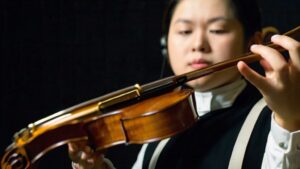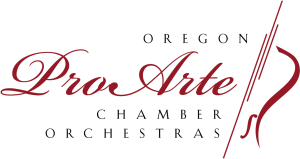Imagine the rustle of pages, the intense gaze of musicians on their stands during a breathtaking symphony. Now, swap out those paper scores for tablets and digital screens. That’s right, the digital score revolution is here, and it’s changing the game for classical musicians. Gone are the days of lugging around heavy, cumbersome scores. Enter the age of thousands of pieces right at your fingertips on a sleek, portable device.
Musicians can now annotate their parts with ease, zoom in for a closer look at complex passages, and never worry about a lost page. The integration of digital scores isn’t just a matter of convenience; it’s fostering a more fluid interaction between musicians and their music. It also opens up a treasure trove of obscure and rarely performed works – pieces that were difficult to access or too costly to print are now just a download away. This democratization of music is breathing life into forgotten compositions and expanding the repertoire available to both performers and audiences.
The Virtual Performance Space

Virtual reality (VR) is pulling classical music into the digital age in a spectacular fashion. Picture this: you don your VR headset and are instantly transported to the front row of the Vienna Musikverein, despite being on another continent. VR performances offer an immersive experience that goes far beyond anything traditional venues could hope to match. You can look around the virtual concert hall, see the intense concentration on the musicians’ faces, and hear the music in rich, three-dimensional sound that feels like it’s happening all around you.
This technology isn’t just a boon for concertgoers. Musicians are using VR to practice and perform in simulated environments, perfecting their craft in the virtual rehearsal spaces of their choosing. They can simulate the acoustics of famous halls to better prepare for performances, or even hold virtual concerts, breaking down geographical barriers and reaching a global audience. The potential for education is vast, too, offering students immersive learning experiences that were previously unimaginable.
Apps and Tools Reshaping Practice Sessions
Tech is also transforming the nitty-gritty of daily practice sessions. Metronomes and tuners have long been staples, but now they’re getting a high-tech makeover. Apps offer more than just a steady beat or pitch correction; they come with features like practice timers, recording capabilities, and stats on your progress. You can get instant feedback on your intonation, rhythm, and even the quality of your tone.
But that’s just scratching the surface. Some platforms use artificial intelligence to provide personalized practice plans, track your improvements over time, and suggest exercises tailored to your developing skills. These smart practice assistants are revolutionizing how musicians approach their instrument, streamlining the path to mastery and making practice a more engaging, productive endeavor.
Streaming Services and the Availability of Classical Music
Streaming services have done wonders for making classical music more accessible. A wealth of recordings, from historic performances by legendary artists to contemporary pieces by living composers, is available at the tap of a screen. This easy access benefits listeners and musicians, who can study various interpretations of a piece, explore diverse repertoire, and discover inspiration in the vast archives available online.
These platforms give a voice to smaller ensembles and soloists who might not have the backing of major record labels. Artists can share their music with the world without the need for physical distribution, leveling the playing field and ensuring that talent, not just connections, determines who gets heard. The result is a richer, more diverse landscape of classical music that’s continually growing and evolving.
High-Tech Instruments and Sound Production
Technology is not leaving the very tools of trade untouched. High-tech instruments, with enhancements ranging from improved materials for better sound quality to embedded electronics for sound manipulation, are entering the classical world. These advancements are not about replacing the beloved Stradivari violins but enhancing the capabilities of instruments to express the inexpressible.
Digital audio workstations (DAWs) and plugins are offering unprecedented control over the sound of recordings. Musicians can record in their home studios with quality that rivals professional setups, experiment with virtual instruments and effects, and collaborate remotely with others. This opens up new avenues for creativity and innovation in classical music composition and performance, making it an exciting time to be both a creator and a consumer.
Looking Ahead
The intersection of classical music and technology is a bustling crossroads of innovation, teeming with potential. As we push forward, these advancements promise to make classical music more accessible, engaging, and diverse. Whether it’s through the digitization of scores, the immersion of VR performances, the precision of high-tech practice tools, the democratization of music through streaming, or the revolution in sound production, technology is breathing new life into this age-old art form.
Remember, though, at the heart of all this innovation is the music itself. The goal is not to replace the traditional with the technological but to use these tools to enhance our understanding, appreciation, and execution of classical music. The fusion of classical music and technology is opening doors to new experiences, sounds, and possibilities, ensuring that this beloved genre continues to thrive and resonate with audiences of all ages, backgrounds, and corners of the globe.
As we march forward, one thing is crystal clear: the future of classical music, enriched and reshaped by technology, is as bright and promising as ever, teeming with opportunities for exploration and discovery.
